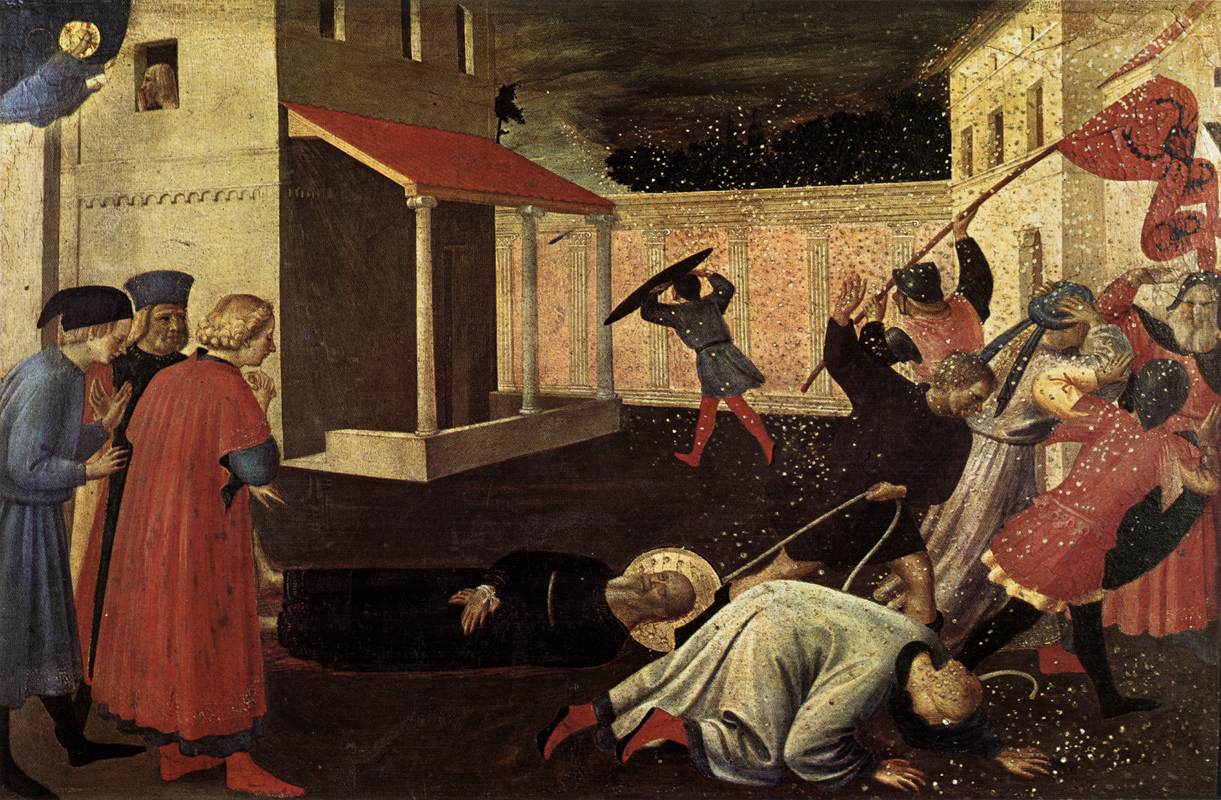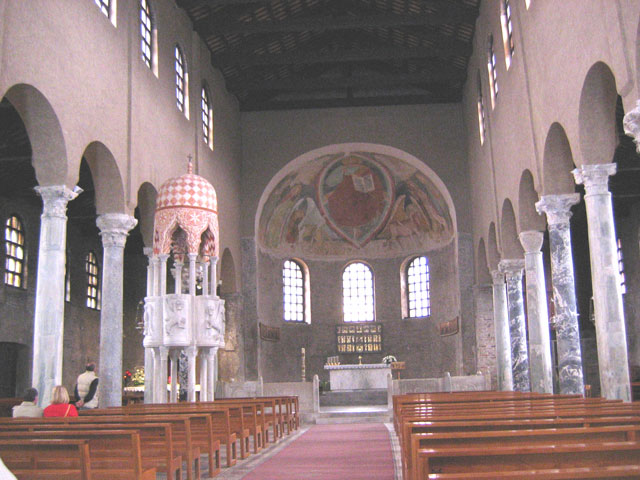|
Saint Mark's Relics
Saint Mark's relics, the putative remains of Mark the Evangelist, are held in St Mark's Basilica in Venice, Italy. Venice Legends '' 'Translatio' '' Saint Mark was martyred and initially buried in the Baucalis section of Alexandria in Egypt. His relics are recorded in Venice as early as the ninth-century in both the will of Doge Giustiniano Participazio () and the travelogue of a Frankish monk on return from a pilgrimage to the Holy Land. However, the oldest surviving written account of the , the transfer of the relics from Alexandria to Venice, dates only to the eleventh century, although earlier writings evidently existed and were used as sources. As narrated, a fleet of ten Venetian trading vessels seeks shelter in the Muslim-controlled city of Alexandria during a storm. This is said to be 'by the will of God'; hence there is no intentional violation of the edict of Emperor Leo V that forbids commercial contact with the Muslims. In Alexandria, two of the Venetian merchants, Buo ... [...More Info...] [...Related Items...] OR: [Wikipedia] [Google] [Baidu] |
Roman Catholic Diocese Of Castello
The Diocese of Castello, originally the Diocese of Olivolo, is a former Roman Catholic diocese that was based on the city of Venice in Italy. It was established in 774, covering the islands that are now occupied by Venice. Throughout its existence there was tension between the diocese, the Patriarchate of Grado to which it was nominally subordinate, and the Doge of Venice. Eventually in 1451 the diocese and the patriarchate were merged to form the Archdiocese of Venice. History Foundation The diocese has its origins in the Patriarchate of Aquileia, founded during the Roman Empire. Hilarius of Panonia is recorded as bishop of Aquileia from about 276–285. As the empire fell into decline, Aquileia was sacked in turn by Visigoths (403), Huns (452) and Lombards (659). During these times of trouble some of the people would take refuge on the offshore islands. By 630 an independent Patriarch of Grado was established on the island of Grado. The islands of Venice had originally been ... [...More Info...] [...Related Items...] OR: [Wikipedia] [Google] [Baidu] |
Paopi
Paopi ( cop, Ⲡⲁⲱⲡⲉ, ''Paōpe''), also known as Phaophi ( grc-gre, Φαωφί, ''Phaōphí'') and Babah. ( ar, بابه, ''Baba''), is the second month of the ancient Egyptian calendar, Egyptian and Coptic calendars. It lasts between 11 October and 9 November of the Gregorian calendar, unless the previous Coptic year was a leap year. The month of Paopi is the second month of the Season of ''Season of the Inundation, Akhet'' (Inundation) in Ancient Egypt, when the Flooding of the Nile, Nile floods inundated the land. (They have not done so since the construction of the Aswan High Dam, High Dam at Aswan.) Name Paopi means "that of Opet Festival, Opet", for the month originally celebrated the "Beautiful feast of Opet". The ancient Egyptians believed that during this month, the sun ancient Egyptian deities, deity Amon-Ra travelled from Karnak to Luxor to celebrate the famous festival of Opet. Coptic Synaxarium of the month of Paopi See also * Egyptian calendar, Egyptian, ... [...More Info...] [...Related Items...] OR: [Wikipedia] [Google] [Baidu] |
Saint Mark's Coptic Orthodox Cathedral, Cairo
St. Mark's Coptic Orthodox Cathedral is a Coptic church located in the Abbassia District in Cairo, Egypt. The cathedral is the Seat of the Coptic Orthodox Pope. It was built during the time when Pope Cyril VI of Alexandria was Pope of the Coptic Orthodox Church, and was consecrated on 25 June 1968. The church is dedicated to St. Mark the Evangelist, an apostle of Jesus and founder of the Coptic Orthodox Church. Relics of his life are kept inside. It was, until 2019, (after the inauguration of the new Nativity Cathedral) the largest cathedral in Africa and the Middle East. History of the land The cathedral is located in the place of a village called p-Sovt em-p-Hoi (Coptic: ⲡⲥⲟⲃⲧ ⲙ̀ⲡϩⲟⲓ "the wall of the moat") which had been given to the Coptic Church in 969 by Jawhar. This land was a replacement for the land that was taken from the church to be included in building the Palace of Al-Mu'izz li-Din Allah as part of the planning of the new capital of Egypt, C ... [...More Info...] [...Related Items...] OR: [Wikipedia] [Google] [Baidu] |
Crypt
A crypt (from Latin ''crypta'' "vault") is a stone chamber beneath the floor of a church or other building. It typically contains coffins, sarcophagi, or religious relics. Originally, crypts were typically found below the main apse of a church, such as at the Abbey of Saint-Germain en Auxerre, but were later located beneath chancel, naves and transepts as well. Occasionally churches were raised high to accommodate a crypt at the ground level, such as St Michael's Church in Hildesheim, Germany. Etymology The word "Crypt" developed as an alternative form of the Latin "vault" as it was carried over into Late Latin, and came to refer to the ritual rooms found underneath church buildings. It also served as a vault for storing important and/or sacred items. The word "Crypta", however, is also the female form of ''crypto'' "hidden". The earliest known origin of both is in the Ancient Greek '' κρύπτω'' (krupto/krypto), the first person singular indicative of the verb "to conc ... [...More Info...] [...Related Items...] OR: [Wikipedia] [Google] [Baidu] |
Martino Da Canal
Martino da Canal was a 13th-century Venetian chronicler, whose only known work is the so-called ''Les estoires de Venise'', a French chronicle of the history of Venice from its beginnings to 1275. It is particularly valuable for Canal's depiction of events during his own lifetime, particularly during the years 1267–1275, when he was at Venice. Biography Martino da Canal is not mentioned in any other source, and the only biographical information about him is what can be extracted from his work. His date of birth and early life are entirely unknown. He was obviously familiar with Venice and its history, and certainly resided in the city itself between 1267 and 1275, when he composed his chronicle, as his account of these years is obviously that of an eyewitness. It is possible that he was a minor public official, perhaps a scribe, on some Venetian board or magistrature, with the ''Tavola da Mar'', a sort of maritime customs, the most likely candidate. He may have had some close relat ... [...More Info...] [...Related Items...] OR: [Wikipedia] [Google] [Baidu] |
St Mark's Basilica-praedestinatio-Zen Chapel
ST, St, or St. may refer to: Arts and entertainment * Stanza, in poetry * Suicidal Tendencies, an American heavy metal/hardcore punk band * Star Trek, a science-fiction media franchise * Summa Theologica, a compendium of Catholic philosophy and theology by St. Thomas Aquinas * St or St., abbreviation of "State", especially in the name of a college or university Businesses and organizations Transportation * Germania (airline) (IATA airline designator ST) * Maharashtra State Road Transport Corporation, abbreviated as State Transport * Sound Transit, Central Puget Sound Regional Transit Authority, Washington state, US * Springfield Terminal Railway (Vermont) (railroad reporting mark ST) * Suffolk County Transit, or Suffolk Transit, the bus system serving Suffolk County, New York Other businesses and organizations * Statstjänstemannaförbundet, or Swedish Union of Civil Servants, a trade union * The Secret Team, an alleged covert alliance between the CIA and American industry ... [...More Info...] [...Related Items...] OR: [Wikipedia] [Google] [Baidu] |
Theodore Stratelates
Theodore Stratelates ( grc-gre, Ἅγιος Θεόδωρος ὁ Στρατηλάτης (); cop, ⲡⲓⲁⲅⲓⲟⲥ Ⲑⲉⲟⲇⲱⲣⲟⲥ), also known as Theodore of Heraclea ( grc-gre, Θεόδωρος Ἡρακλείας; AD 281–319), was a martyr and Warrior Saint in the Eastern Orthodox, Catholic and Oriental Orthodox Churches. There is much confusion as to whether he and St. Theodore of Amasea were the same person, as the stories about their lives later diverged into two separate traditions. Life Theodore came from the city of Euchaita in Asia Minor. He killed a giant serpent living on a precipice in the outskirts of Euchaita. The serpent had terrorised the countryside. Theodore armed himself with a sword and vanquished it. According to some of the legends, because of his bravery, Theodore was appointed military-commander (''stratelates'') in the city of Heraclea Pontica, during the time the emperor Licinius (307–324) began a fierce persecution of Christians ... [...More Info...] [...Related Items...] OR: [Wikipedia] [Google] [Baidu] |
Grado, Friuli-Venezia Giulia
Grado ( vec, Gravo; fur, Grau; sl, Gradež; la, Gradus) is a town and ''comune'' of 8,064 residents in the north-eastern Italy, Italian region of Friuli-Venezia Giulia, located on an island and adjacent peninsula of the Adriatic Sea between Venice and Trieste. The territory of the municipality of Grado extends between the mouth of the Isonzo and the Adriatic Sea and the Grado Lagoon, lagoon of the same name which covers an area of about 90 square kilometers and goes from Porto Buso to Fossalon. Characteristic of the lagoon is the presence of the '':it:Casone_(architettura), casoni'', which are simple houses with thatched roof used in the past by the fishermen of Grado, who remained in the lagoon for a long time, returning to the island of Grado only during the colder period of the year. Once mainly a fishing centre, today it is a popular tourist destination, known commonly as ''L'Isola del Sole'' ("The Sunny Island"). It is also famous because it is a spa town; from 1873 a mar ... [...More Info...] [...Related Items...] OR: [Wikipedia] [Google] [Baidu] |




